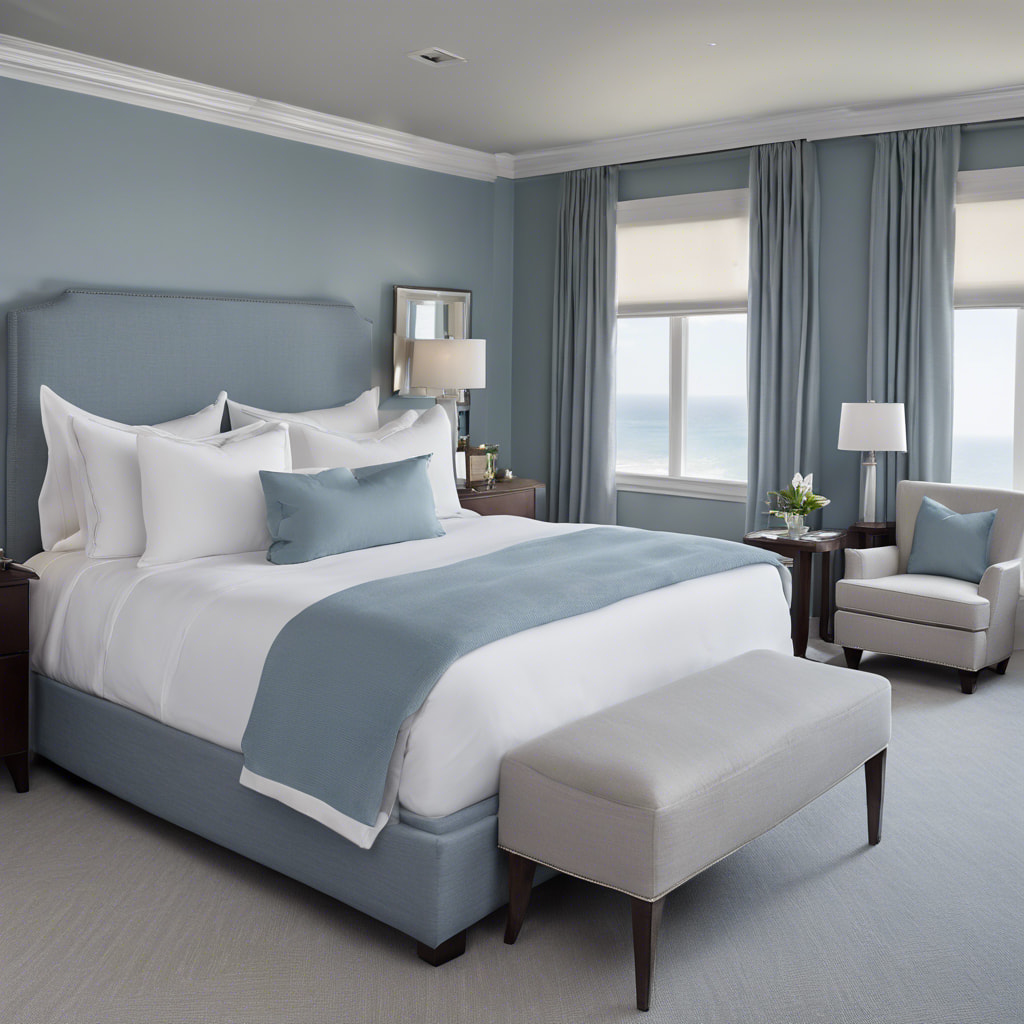Imagine this: stepping into a hotel room that’s anything but vanilla. Forget predictable color palettes and generic furniture. Instead, picture vibrant canvases—each room telling a unique story through the magic of color.
Color isn’t just decorative; it’s a powerful tool in hospitality design. It sets the mood, influences emotions, and can even define your hotel’s brand identity.
So, let’s unlock the transformative power of color in hotel room design.
We’ll move beyond beige and explore stunning color schemes. From serene tranquility to invigorating energy, we’ll curate palettes that resonate with different guest preferences.
Get ready to embrace the bold—because the right colors can turn generic spaces into captivating havens, leaving a lasting impression on every guest.
How hotel room color schemes can impact the guest experience?
Different colors have the power to evoke specific emotions and moods. Warm colors like
- red
- orange
- yellow
are known to stimulate energy and create a sense of excitement. These colors can be used to create a vibrant and lively atmosphere in hotel rooms, perfect for attracting social and outgoing guests.
On the other hand, cool colors such as
- blue
- green
- purple
have a calming and relaxing effect. These colors are ideal for creating a serene and peaceful environment, perfect for guests who seek tranquility and relaxation.
Neutral tones like
- beige
- gray
- white
are versatile and can complement any design style, providing a sense of balance and tranquility.
The choice of color schemes in hotel rooms can greatly impact the guest experience. By strategically selecting colors, hoteliers can create an environment that aligns with their target audience and enhances the desired mood and atmosphere.

Popular Color Schemes
Neutral tones are a popular choice for hotel room color schemes due to their calming and versatile nature.
Colors like beige, gray, and white
- create a sense of tranquility and can easily complement various design styles.
- They provide a blank canvas for other elements in the room, allowing the guests’ attention to focus on the overall experience.
Colors like red, orange, and pink
- can infuse a sense of excitement and playfulness, perfect for hotels targeting a younger and more adventurous audience.
- These colors can be used as accent walls or incorporated into furniture and decor to create a visually stimulating and memorable experience.
Monochromatic color schemes offer an elegant and modern appeal. By using different shades of the same color, hotel rooms can achieve a sophisticated and cohesive look.

Factors to Consider When Choosing a Color Scheme Lighting
Several factors need consideration when choosing a color scheme for hotel rooms:
- Lighting is crucial, with natural lighting enhancing vibrancy and artificial lighting altering appearance.
- Testing colors under different lighting conditions is essential to achieve the desired effect.
The size and layout of the room should be considered:
- Lighter colors can make small rooms appear more spacious.
- Darker colors can create a cozy and intimate atmosphere in larger rooms.
Consideration of the room’s dimensions and purpose is important in selecting the appropriate color scheme.
The color scheme should align with the hotel’s brand identity and target audience:
- Colors convey an image and evoke emotions.
- Luxury hotels may choose rich and sophisticated colors.
- Budget hotels may prefer neutral and understated tones.
Understanding the target audience’s preferences and expectations guides the color selection process.

Tips for Implementing a Successful Color Scheme
Implementing a successful color scheme involves considering various elements. Utilizing accent colors and patterns can add visual interest and depth to the room.
For example, incorporating vibrant accent pillows or artwork can create a focal point and inject personality into the space.
In addition, the color scheme should be seamlessly integrated into the room’s design and amenities. From the furniture and textiles to the wall art and accessories, every element should complement the chosen colors. This creates a cohesive and harmonious environment that enhances the overall guest experience.
The Art of Elegance: Glamorous Design Mastery in Hotel Room Color Schemes
Step into a realm of sophistication and luxury with Glamorous Design Company, where the art of creating captivating hotel room color schemes is elevated to perfection.
Our team of expert designers understands the intricate dance between colors, lighting, and ambiance, curating spaces that evoke opulence and enchantment.
From the chic vibrancy of modern luxury to the timeless allure of classic elegance, we specialize in tailoring color palettes to meet the unique identities of each hotel.
Ready to transform your hospitality spaces into immersive experiences? Explore our portfolio and witness the magic of Glamorous Design Company.
Contact us today through our website to schedule a consultation and let us bring your hotel’s vision to life.
Your journey to unparalleled style and sophistication begins here.
FAQ
Which Colour is best for hotel room?
Neutral tones such as beige, gray, or soft pastels are often preferred for hotel rooms as they create a calming and welcoming atmosphere.
What is the best color for hotel walls?
Light, neutral shades like white, cream, or light gray are commonly used for hotel walls to create a sense of spaciousness and tranquility.
What is the best color for hotel reception?
Warm, inviting colors like earth tones, soft blues, or light greens are popular choices for hotel reception areas, as they help guests feel welcome and comfortable upon arrival.
What is the hotel color theory?
Hotel color theory involves selecting colors that evoke specific emotions and enhance the overall guest experience. This may include using warm tones to create a cozy ambiance or cool tones to promote relaxation and tranquility. Additionally, colors should complement the hotel’s branding and design aesthetic while considering cultural preferences and regional influences








